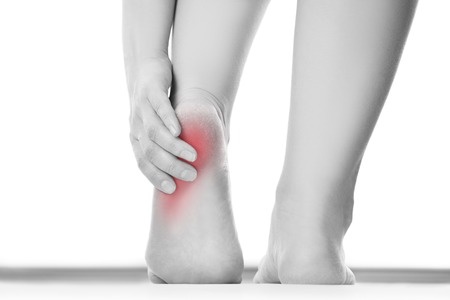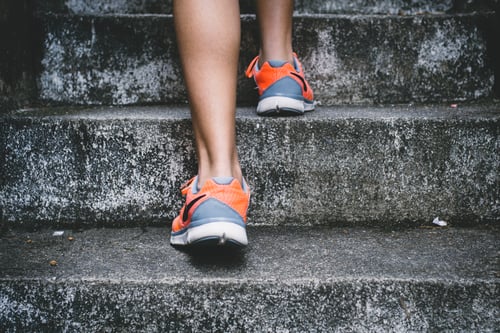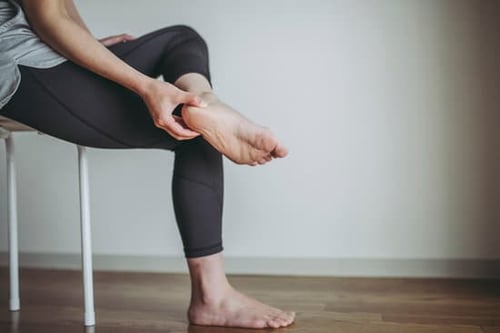
Pain in the base of the heel is the most common foot problem our patients have. We put tons of stress on our feet just by walking on them each day, not to mention things like exercising, playing sports and wearing irritating shoes. When given a little care and rest, heel pain will usually heal itself over time. However, if heel pain is ignored and you continue to put stress on it, it could develop into a serious condition.
There are generally two different kinds of heel pain: pain at the bottom of the heel and pain at the back of the heel.
Pain at the bottom of the heel may be:
Plantar Fasciitis. The “plantar fascia” is a thick band of tissue that connects the heel bone to the toes and supports the arch of the foot. When this tissue stretches too much it gets inflamed and starts to cause pain. Stretching the calf muscles, arch supports and over-the-counter anti-inflammatory meds, like Advil or Aleve can help.
Heel Spur. A Heel spur is a calcium deposit that forms where the plantar fascia tissue band connects the heel bone to the toes. These are caused by plantar fasciitis that has gone untreated, and can be treated the same way as plantar fasciitis: rest, stretches, arch supports and oral anti-inflammatory medicines.
Bruised Heel. If you step hard on a sharp or raised object you can bruise your heel, but the heel skin is thick and may not always look bruised. A bruised heel just needs rest and time in order to heal itself.
Pain at the back of the heel may be:
Retrocalcaneal Bursitis (aka Achilles Bursitis). An inflammation of the small, fluid filled sac located at the back of the heel where the Achilles tendon and the heel bone meet. Achilles bursitis can be treated by rest, icing the affected area for 15-20 minutes several times a day and stretching of the Achilles tendon.
Achilles Tendonitis. The Achilles tendon is the largest tendon in the body. It connects the calf muscle to the heel bone, and when it is overused or under intense stress, it can become inflamed and painful. Like all the conditions above, Achilles tendonitis can usually heal on its own with rest, icing the affected area 15-20 minutes several times a day, arch supports and stretching the Achilles tendon.
Most heel injuries start out minor but if they are misdiagnosed, or left untreated, they can lead to more serious problems that may need surgery to correct.
If you are experiencing heel pain, or any other foot and ankle problems, please contact us to schedule an appointment today. You can visit our website here, or visit one of our two convenient locations in The Woodlands or Magnolia.







